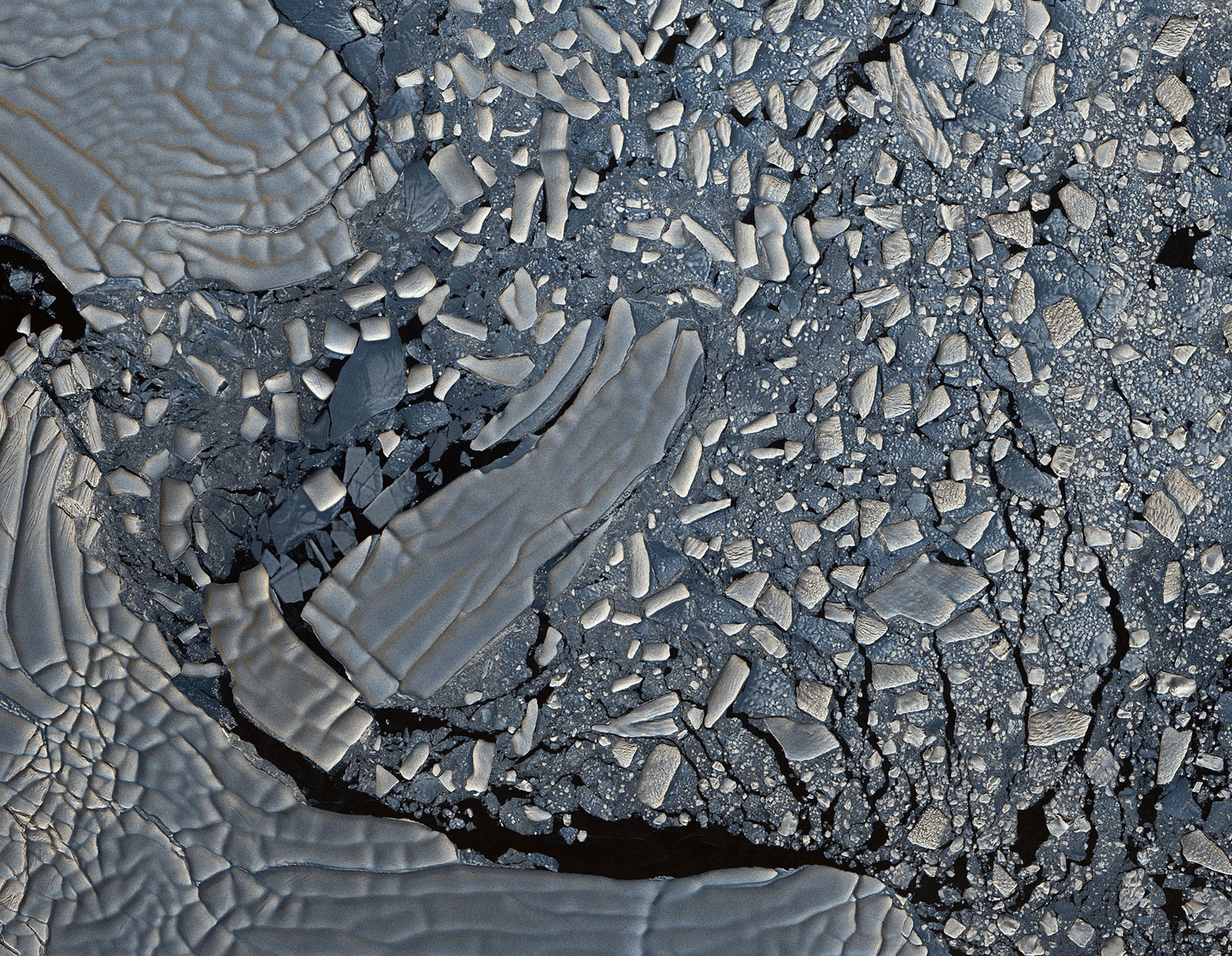One month after the launch of the second CSG satellite, which is still undergoing flight tests and qualification, e-GEOS has received and processed the first extraordinary images of our planet.
The first image is that of the Pine Island Glacier in Antarctica, which was received on 19 February at 18:02 UTC, which clearly shows icebergs, also of considerable size (the one in the centre of the image is almost 15 km long) breaking away from the ice shelf formed by the flow of ice into the sea.
This is a Stripmap acquisition (3 m resolution over a 40x40 km area) made with dual polarisation (HH and HV). The colour combination was obtained by combining the two polarisations with the mean value between the two polarisations (RGB = HH, mean, HV).

The second image shows the Magredi, the so-called “Pordenone steppe”, an area of the high Friulian plain at the centre of a kind of 'V' formed by two watercourses, the Meduna and the Cellina. Here the streams meet and flow together downstream and then sink underground into the water table, exposing a thick alluvial blanket of calcareous-dolomitic conglomerates. In the south-west corner of the image you can clearly see the town of Pordenone.
The acquisition, which was made on 21 February at 04:37 UTC, is a Spotlight-2B acquisition (0.6 m resolution over a 10x10 km area), with dual polarisation (HH and HV). The colour combination was obtained by combining the two polarisations with the mean value between the two polarisations (RGB = HH, mean, HV).

The third image shows some islands of the Galapagos archipelago (Isla de San Cristobal to the east, Isla Santa Cruz and Isla Santiago to the west), in the Pacific Ocean. What is particularly interesting is the level of detail that can be seen of the sea waves and their interaction with the islands.
The acquisition, which was made on 19 February at 11:56 UTC, is a ScanSAR-2 acquisition (6x40 m native resolution over a 200x200 km area), with dual polarisation (HH and HV). The colour combination was obtained by combining the two polarisations with the mean value between the two polarisations (RGB = HV, mean, HH), so as to make the sea blue.

COSMO-SkyMed Second Generation is a satellite system designed to ensure the operational continuity of the synthetic aperture radar (SAR) observation services provided by the four COSMO-SkyMed first generation satellites, launched between 2007 and 2010. The first CSG satellite was launched in December 2019, while the second was launched on 31 January 2022.
The Italian industry plays a leading role in this programme, with Leonardo and its joint ventures Thales Alenia Space and Telespazio, together with a significant number of small and medium-sized enterprises.
Thales Alenia Space (Thales 67%, Leonardo 33%) is the prime contractor responsible for the entire System and for the construction of the two satellites that make up its space component, while Telespazio (Leonardo 67%, Thales 33%) built the Earth segment and houses the constellation's command and control centre in the Fucino Space Centre.
Leonardo also contributes to the programme by supplying star trackers for satellite orientation as well as photovoltaic panels and electronic units for power management.
The data generated by the COSMO-SkyMed satellites are marketed exclusively all over the world by e-GEOS, a company owned by Telespazio (80%) and ASI (20%), which develops applications and provides operational services based on the same data.


